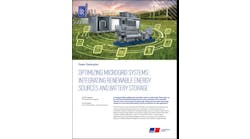Podcast: Play in new window | Download
Why are Duke Energy and other utilities so good at being the “Ubers of energy” and creating appealing energy brands while other energy companies are struggling to establish clear and attractive brands?
In this podcast (click on the player above to listen), Fridrik Larsen, CEO of Larsen Energy Branding–likely the first CEO in the world to get a Ph.D in energy branding—defines energy branding and explains why many companies are doing a bad job of establishing a clear, consistent and compelling brand.
Who’s doing a good job of branding? Duke energy, he says. The company understands its connection to its customers and understands that energy consumers don’t have just one face. RWE Group in Germany is also a adept at branding, as is NPower in the UK.
“Npower understands where the market is going, and wants to be the next Uber of energy,” he says.
“With customer-driven companies, you need branding,” Larsen says. Utilities especially need energy branding because so many newcomers are coming in and trying to grab a share of the market, he notes.
Recent college graduates are greener and more idealistic, he says. They will demand more from utilities and energy companies. Utilities need to be opaque and need to offer green options, he says.
To brand for the next generation of environmentalists, companies must be honest and genuine. They may have to clean up their energy portfolios before they try to “look” like they’re environmentalists, he stresses.
“You can’t greenwash them,” he says. If a company burns fossil fuels, it has to be honest. Companies that burn fossil fuels might consider purchasing carbon offsets to show their intention of improving the environment.
“To be a good brand you have to be honest and work your image from your own identity.”
In addition, energy companies need to strive to be consistent. “You can’t be a scientist in a white jacket one day and a comedian the next day,” Larsen says.







